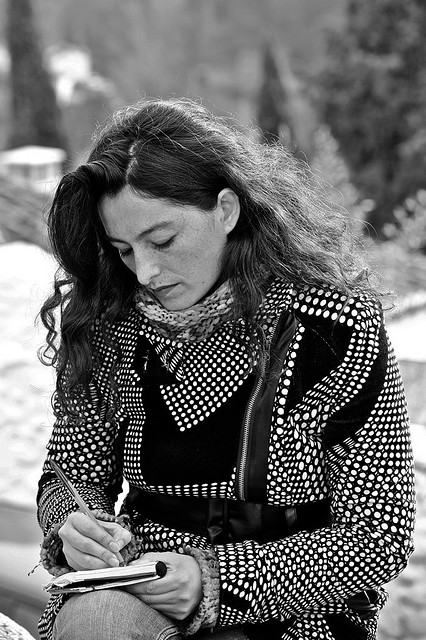 If you’re trying to build your family through open adoption, chances are you have more than a passing familiarity with what’s known as a “Dear Birthmother” letter.
If you’re trying to build your family through open adoption, chances are you have more than a passing familiarity with what’s known as a “Dear Birthmother” letter.
“Dear Birthmother” letters have been around for as long as open adoption has. Visit any open adoption agency or networking website today and you’ll find scores of them–sometimes dozens, sometimes hundreds–prominently displayed throughout their pages.
First and foremost, a “Dear Birthmother” letter is a a marketing tool–a document written by hopeful adoptive parents like you to expectant parents who are considering adoption for their child.
In anywhere from 500-2000 words, it gives you the chance to paint a portrait of yourself, describing your life, interests, family, home, reasons for adopting and the future you can offer a child. The hope is that upon reading your letter, the expectant parents will connect with you and eventually choose you as parents for their child.
As you may have noticed as you’ve read through them, each “Dear Birthmother” letter is as different as the people writing it. And while there are many right ways to begin one (“Hi,” “Hello,” etc.), there is one wrong way: “Dear Birthmother.”
The definition of a birthmother
Confused? Don’t be. Actually, it’s quite simple: The person you’re writing to isn’t a birth mother. So avoid the mistake that many people make by calling her one. And while you’re at it, don’t label it a “Dear Birthmother” letter–another common mistake. Just Google those three words and you’ll instantly see what I mean. Call it an adoption profile, an adoption letter, or a parent profile instead.
Here’s why: a birth mother is a woman who has relinquished her child for adoption. But that’s not the person you’re writing to. The person you’re writing to hasn’t relinquished her child. At least not yet. That’s why you’re writing her, right?
Instead, your letter is addressed to a woman who is experiencing an unplanned pregnancy and may relinquish her child in the future — “may” being the operative word here. In other words, adoption is still an option for her. She may decide to go ahead with her plan. Then again, she may not.
The difference between a birthmother and an expectant mother
By calling her a “birthmother” at this stage, you’re taking that choice away from her. In effect, you’re telling her that the decision has already been made–that the placement is a done deal, when in fact, it isn’t. Not to mention that your first reader may not be an expectant mother at all–it could be the expectant father. However, that’s another subject for another blog post.
And finally, let’s be honest: doesn’t “Dear Birthmother” sound a bit stilted to you? Change places for a moment and think about how you would feel if you received a letter about a potentially life-changing decision that addressed you as “Dear Adoptive Parent.”
If you’ve ever tried writing an adoption profile, I don’t need to tell you how difficuit it is. The stakes couldn’t be higher, and the challenge of sharing some of the most intimate details of your life with someone you’ve never met but who may hold the key to your future happiness couldn’t be greater. So the last thing you want to do after all that hard work, after all that agonizing to find just the right words, is give your reader a reason to pass you over.
How expectant parents react to being called a “birthmother” is hard to say. As with just about anything, it varies from person to person, and as far as I know it’s not something that has been extensively documented.
But if you want to know how birth mothers who have gone the open adoption process feel about it, you don’t have to look too far. In scores of websites, blogs and articles, they’ve expressed their disdain for the term in the strongest words possible.
The danger of thinking of an expectant mother as a birthmother
As you’re reading this, you might think this is just another open adoption issue that’s being blown out of proportion, a question of semantics. But you would be wrong to think that. Why? Because there’s also a certain mindset that goes with it.
By fooling yourself into thinking that you’re writing to a birth mother, you’re basically saying that all you need to do now is sit back and wait for her to give birth and hand over her baby to you.
But that’s not the way the open adoption process works. What happens if she changes her mind? What happens if she decides that she doesnt want to place her baby for adoption–that she wants to parent instead? See what I’m getting at?
By labeling her a birth mother at this stage of the game, you could be potentially setting yourself up for a huge surprise and a crushing disappointment. After all, having a change of heart isn’t just an option that every expectant mother has. It’s her right. And as hard as that may be to accept, it’s something you need to acknowledge and respect.
So why do adoption agencies and professionals continue to refer to adoption profiles as “Dear Birthmother” letters and to expectant mothers as “birthmothers”?” Habit? Tradition? Convenience? I’m not sure. That’s something you’ll have to ask them.
And when they do use those terms, make sure you correct them. You’ll be doing a service to expectant mothers. And you’ll be doing a service to yourself. After all, addressing your reader properly from the beginning will not only help you get your relationship off to a good start. It will ensure that it doesn’t end before it has a chance to begin.
Looking to increase your chances to connect with expectant parents considering adoption? Explore our plans.
